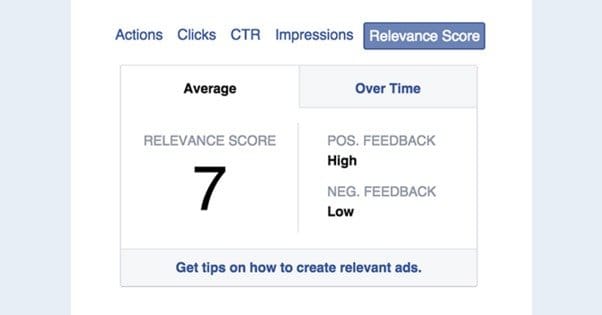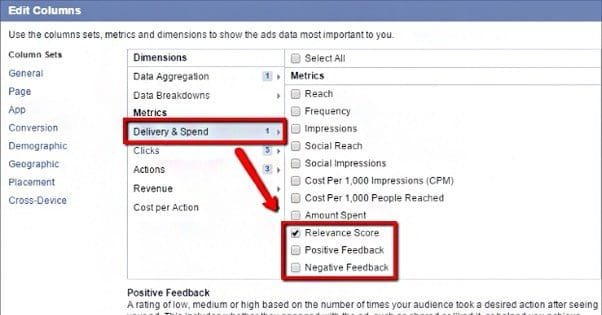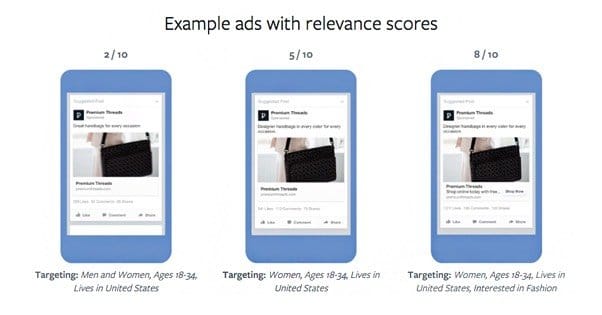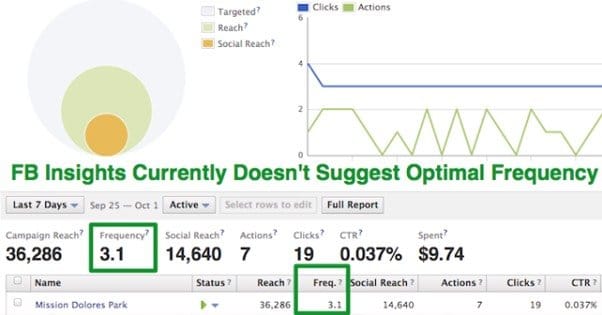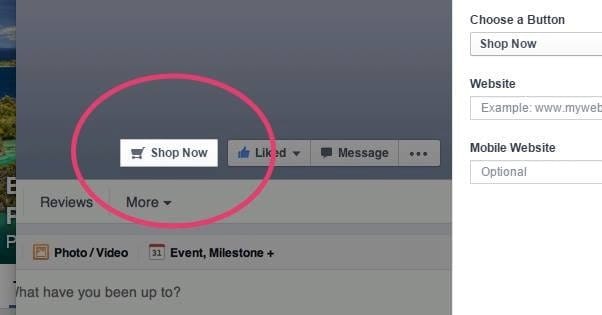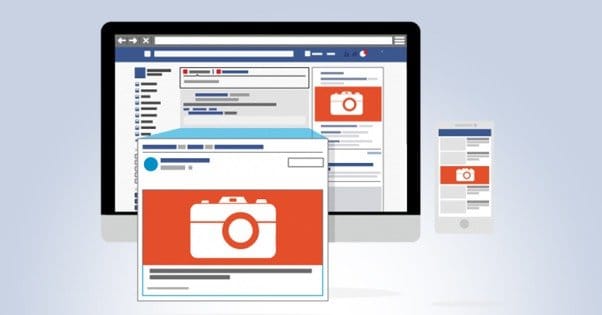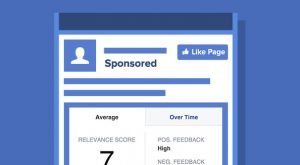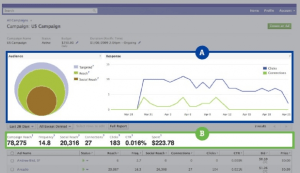 Written by ContentPowered.com
Written by ContentPowered.com
There are a lot of moving parts that go along with PPC ads. One of them, shared by both AdWords and Facebook Ads, is the idea of page relevance. Today I’m just talking about Facebook’s Page Relevance score, but be aware that most everything that applies to Facebook will also apply to Google.
On top of that, they’re just solidly good techniques to help with any ad on any site.
What is Page Relevance?
Page Relevance is yet another PR-abbreviated metric marketers should care about, so it’s probably a good thing PageRank is on its way out, eh? Facebook’s PR is a measurement on a scale of 1 to 10, indicating how relevant an ad is to the audience you’ve targeted with it, based primarily on an analysis of the copy and the landing page. A higher rank is good, a lower rank is bad.
Relevance score is not a measure of quality. Facebook has other ways of telling you that your ads suck; relevance is just a measurement of how likely your target audience is to pay attention to the ad and have an interest in what you’re promoting. It doesn’t judge the picture in your ad, it doesn’t point out typos in your copy, and it won’t tell you that your landing page is garbage. It will just tell you that if you’re marketing designer handbags, you’re going to have a better time pointing your ads at middle-aged women than you are at young men.
Page Relevance is made up of a bunch of different, interconnected metrics Facebook has been measuring and aggregating for years. There’s a ton of data that goes into this simple 1-10 ranking. It pays attention to engagement, to clicks, to conversions, to CTR, to negative reviews, and a lot more. If your audience is historically unlikely to engage with an ad covering your topic, you’ll have a low PR score.
Here’s another thing, and this one actually differentiates Facebook Page Relevance with AdWords Quality Score. Quality Score has an actual effect on how well your ads perform, how they’re displayed, and how much they cost. Page Relevance does not. PR is a measurement and a prediction, it’s not a factor in other decision. You won’t have to pay more because your Page Relevance is lower.
Well, that’s not strictly true. You will end up having to pay more, but that’s because your choice of targeting means you have to pay more to reach the people who matter. Your cost per individual piece of engagement, individual click, or individual conversion will be significantly higher.
Two identical ads with different audiences – one with a 3 and one with a 9 – will have roughly the same cost per view or click, but one will have much higher click rates and much lower costs per overall conversion.
Checking Page Relevance is very easy. All you need to do is go into your Ads Manager and click on an ad set. Within that ad set, you’ll see the various metrics of the various ads within that set, including costs, CTR, whether it’s enabled or not, and relevance score. Click on a specific ad and click the “relevance score” tab to see a detailed read of the score and related metrics.
When you first create the ad, or are in the process of creating it, the relevance score you’re given is an estimate. As the ad runs, some people will leave feedback, and the actual metrics for the ad will be recorded. All of this will be shown in the relevance score tab, and will adjust the actual score accordingly. Facebook is good at estimation, though; the score likely won’t change by much.
Relevance score is important because it affects the preference your ad is given. If Facebook has five ad slots to fill and a pool of 15 ads to choose from, they’re going to pick the five with the highest relevance scores.
So, to sum up: a higher relevance score means more preferential display to a more interested audience, which results in a higher click-through rate and a lower cost per click.
Oh, and relevance scores are nothing new. They’re new to marketers, but that’s only because Facebook has just started publishing them. They were always an internal metric, with the same functionality they have now.
Improving Facebook Page Relevance
I just want to be clear here; taking actions to improve your Page Relevance is just a way of taking actions to improve your ads. They will improve all around; CTR, costs, success rates, everything.
So what metrics specifically go into the calculation of Page Relevance? Facebook primarily lists feedback; if users interact with your ad in a positive way, your PR will go up. Positive interactions include clicks, app installs, video views, and other forms of engagement. Meanwhile, negative interactions will decrease the score. These include primarily the “I don’t want to see this” button when a user hides your ad, but also spam reports.
Additionally, some marketers include other items in the list. Shares and completions of the ad objective are both strong positive signals, while likes, comments, and clicks without completing the objective are all beneficial in a minor way.
How can you actually take action to improve your ads, and with them, your Page Relevance score? Here are some tips.
Create Narrow Ads for Specific Buyer Personas
This is possibly the most important foundational tip I can give you. Determine exactly what the purpose of the ad is, and tailor your audience to the people most likely to actually do the thing. If you’re selling women’s shoes, don’t include men in your targeting. If you’re selling lawnmowers, don’t target people who don’t own homes. If you’re an affiliate for bank account creation, don’t target people with no money. It’s all very simple, but you can dig quite deep into it.
The key here is to be narrow. A lot of marketers want to err on the side of a larger, broader audience for the potential of a higher volume. That’s fine, if what you want is a larger volume of less interested viewers, but that won’t help your Page Relevance. What you want is a narrow audience of hyper-targeted users. Just don’t go too narrow. A potential audience of under 50,000 users is probably too small, barring a couple of exceptions I’ll cover later.
Split Test Every Aspect of Your Ads
Testing and iteration is the key to success in all things, and improving Page Relevance is no different. With Facebook ads, you truly can split test anything. Change your targeting. Change your image. Change your headline. Change your copy. Change your landing page. Change your offer.
The process behind split testing is simple. Create two identical ads and change one variable between them. You can run multiple variations at once if you want, or limit yourself to two; it’s up to you. Some small businesses have to limit themselves due to budget constraints, and that’s fine. Just make sure you always limit yourself to one variable at a time; otherwise you won’t know which change had the positive or negative impact and your test is invalid.
Make Use of the Interest Intersection Features
Interest intersection is just a fancy way of applying basic computer logic to interest targeting. By default, if you create an ad and apply two interest targets, Facebook will use OR logic. If a user fits one but not the other, they count as part of the audience, and the ad will display for them.
Interest intersection changes the OR to AND. It changes the broad pool to the intersection of a Venn diagram. Only users who have both interests as part of their profile will be part of your audience. This allows you to prune down the audience a lot.
Monitor Ad Frequency
Ad blindness is a problem for many businesses, and the smaller your audience gets, the more susceptible to it they are. If you have the budget to show your ad to everyone in your audience twice, that’s perhaps idea. An ad frequency below 1 means that a portion of your audience never saw your ad. A frequency above 1 means some people are seeing it more than once, where a frequency of 2 means everyone in the audience saw it twice.
The reason you want to monitor this is because people will start to notice when they see an ad several times. The more they see it, the more strongly they will react to it. Unfortunately, most of the time this means they’ll hide it out of annoyance, which is a huge negative signal and will tank your relevance score. I highly recommend avoiding letting your ads go above a frequency of 2.
Minimize the Chances of Reports
There are a lot of reasons why a user might report an ad or hide it from their feed. Overdone frequency is just one of those reasons. They might also not consider themselves part of the target audience and want to be removed. They might find the content offensive in some way. They might just not like your brand.
To a certain extent, you can’t avoid all negative engagement. You just have to avoid what you can, like minimizing anything that might make you look like a spammer or a thin clickbait affiliate.
Boost Your CTA to Encourage Actions
Positive engagement boosts your score, and that means you want to encourage it. Don’t use general terms and avoid just putting an ad out there and hoping people will engage. Ask for engagement! Let people know what it is you want. Test different calls to action to see which ones work best.
You have one benefit with Facebook ads, and that’s a built-in CTA button. Make good use of that button and you’re giving users another way they can engage with ads that compliments, rather than duplicates, the engagement they can already perform.
There are a lot of ways you can improve a CTA. You can read a couple of good posts about the topic here and here.
Maintain a Consistent Image Between Ad and Page
Remember; Page Relevance is about the relevance of the page. This may seem like an unnecessary thing to say, but it’s important that you maintain consistent branding between your ads and your page. If you’re running an ad that promotes a 10% discount on vegan foods, you better be sending people to a landing page that offers them a 10% discount on vegan foods. If it’s a 15% discount, people will worry that they’re in the wrong place, and that hurts your engagement. If it’s a 10% discount on all foods, don’t promote that on the landing page; make it part of the fine print.
The same goes for imagery, branding, and color. If your ad is primarily branded with a yellow theme, you don’t want to send people to a page made out of purple. I recommend even using the same sort of product images. If your landing page has pink shoes on it, use pink shoes in your ad in some way, to tie the two together.
Rotate and Refresh Older Ads
The older an ad gets, the fewer people will care about it. This is partially due to ad frequency, but also partially due to the staleness of the offer. Maybe they saw your ad or your offer in another location, an organic post, or another social media site. Maybe the campaign is out of date, like a holiday deals ad that ends two weeks after the holidays. Regardless, ads drop off over time, and that drop off doesn’t just hurt your conversion rates; it hurts your Page Relevance as well.
Use Retargeting for Ads
Retargeting is great for boosting your Page Relevance. In case you don’t know, a retargeting audience is an audience made up of people who have visited your site through a previous Facebook ad, but who have not actually converted. Facebook builds this audience by recording everyone who clicks on your ads in a list, and then removing people from that list when they convert, as tracked by your Facebook conversion pixel.
Retargeting has a notoriously high success rate, because it’s second-stage marketing rather than first stage. You’re not cold selling, you’re selling to people who are interested but who weren’t able or willing to convert at the time. They might have been at work or on mobile, or otherwise just didn’t want to buy at that time. By reminding them of their interest, you can get them to decide it is the right time this time.
The higher rate of clicks and conversions of a retargeting ad serves to boost your Page Relevance score, and that’s great for your ads all around.
Use Custom Audiences from Website Opt-Ins
This sort of custom audience works the same way as the retargeting ad, in a sense. It’s using a list of people you know are at least interested in your product, which boosts engagement.
The way Jon Loomer, Facebook guru that he is, recommends doing this is just targeting your followers on Facebook. The problem with this is that if your Page doesn’t have a ton of users yet, you’re going to have a small, ineffectual audience. It’s entirely possible that your on-site mailing list is much larger.
Thankfully, you can take that mailing list and use it as a custom audience. Facebook will cross-reference the email addresses on your list with people who use those addresses as their Facebook email, and will show the ads to people on that list. It works out very well.
Combining most or all of these tips – as many as you can manage realistically – is a sure-fire way to boost your Page Relevance score. As long as you can get it to 7 or higher, you’re in an excellent position.
